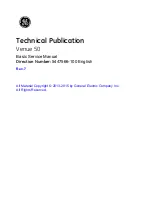
21
CLEANING AND MAINTENANCE (continued)
CLEANING CAUTIONS
When you wipe down the reservoir, do not knock the pumps, misalign the pipes or the sensors.
Draining the reservoir sends water down and out from the drain hose. Water from the GardenChef is
not for drinking as biological residues may still be present and could be harmful.
Do not use steel wool pads to clean the cabinet as they will damage the steel and its rust-resistant fin-
ish.
Do not use detergents or solutions that contain chlorides, ammonias, alkalis or abrasive clean-
ers. Use only environmentally safe, non-toxic solutions in the manufacturers’ recommended
concentration. Non-chlorine bleach from an environmentally-friendly company may be used in
accordance with the guidelines on the packaging.
DAMAGE TO STAINESS STEEL IS PERMANENT, COSTLY TO REPAIR, AND IS NOT COVERED BY
THE WARRANTY
CLEANING THE GROWING DRAWERS
Clean your grow drawers between each harvest.
However, keep a close eye on the environment and immediately clean any mold or organic matter.
Do not use any chemically damaging or toxic cleaning products such as bleach. Do not use
stainless steel cleaner on the interior of the cabinet. Using chemical cleaning products can be
toxic and also damage the stainless steel drawers and cabinet. You can use 30% hydrogen
peroxide to clean the reservoir and water lines (5 teaspoons per gallon of water). Read all
warning labels on the hydrogen peroxide or other cleaning products.
Keep your growing environment clean.
Clean the reservoir, reservoir filter and grow drawers every month.
GENERAL STAINLESS STEEL
CLEANING
Clean the exterior of your cabinet when fin-
gerprints and large amounts of dust appear
on the outer surfaces. Using Stainless Steel
cleaner from your local hardware store,
spray on and wipe down with a cloth going
with the grain (As seen in the pictures). DO
NOT USE STAINLESS STEEL CLEANER
IN THE RESERVOIR OR IN THE DRAW-
ERS THEMSELVES. Stainless steel cleaner
is to only be used on the outer surfaces of
your cabinet!











































